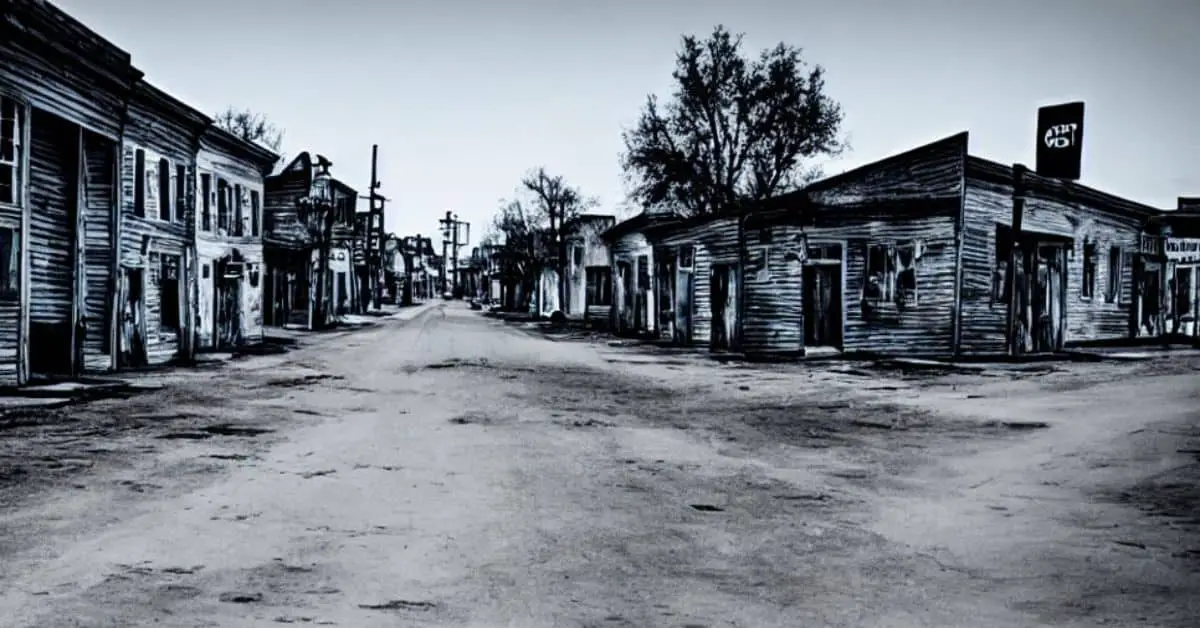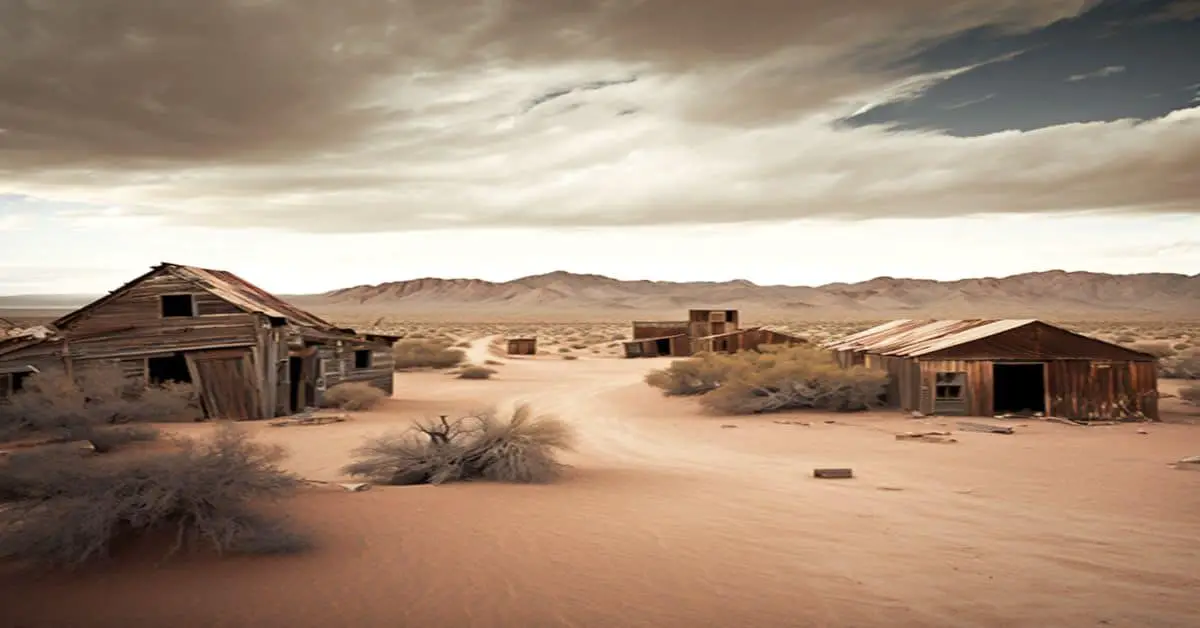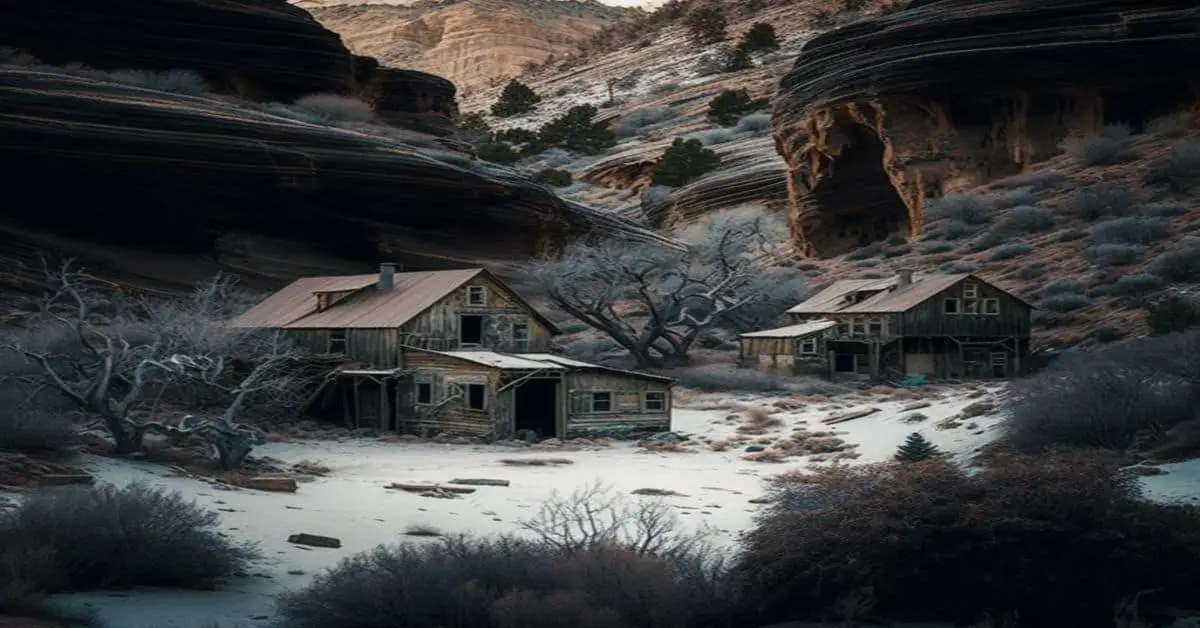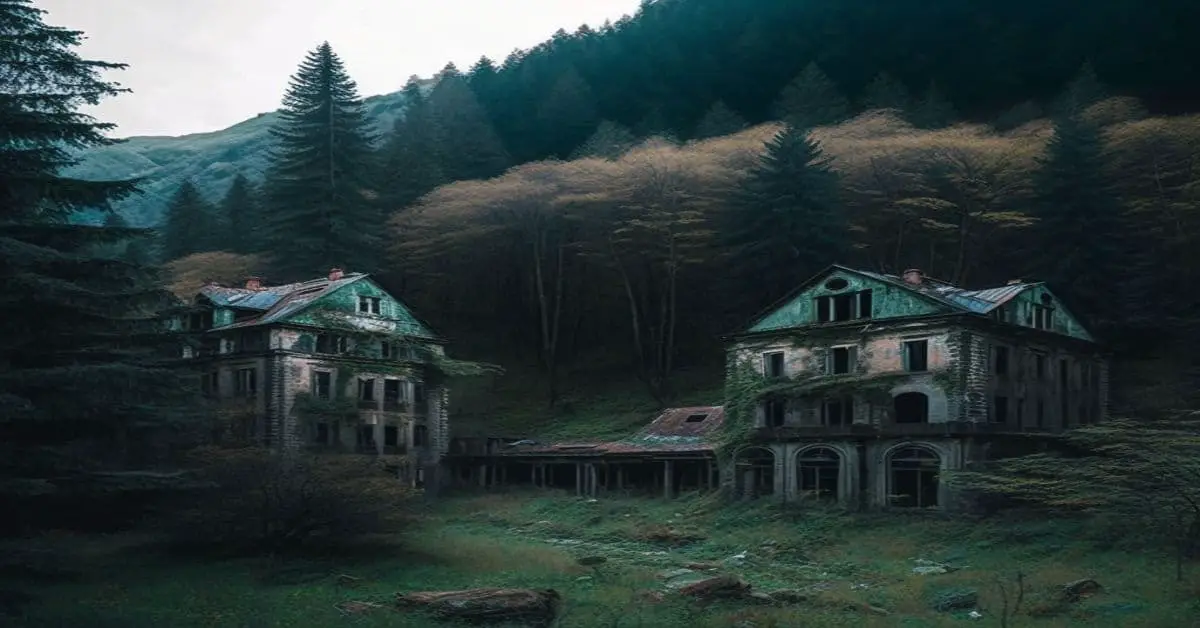As the sun rises over the dusty plains of Inyo County, California, the deserted ruins of San Carlos stand as a testament to the boom and bust of the American West.
Once a bustling community during the gold rush of the 1860s, San Carlos was one of many towns that sprung up in the Owens Valley, attracting prospectors in search of fortune.
Today, the town lies abandoned, with only the faint remains of stone and adobe structures left to tell its story.
Despite its obscurity, San Carlos offers a fascinating glimpse into the American West’s history and the hardships those who sought their fortunes in the gold rush era faced.
From the creation and decline of the town, to the remnants and artifacts that remain, San Carlos is a must-visit destination for anyone interested in the history of the American West and the ghost towns that dot its landscape. Join us as we explore the deserted ruins of San Carlos and uncover the secrets of this forgotten town.
Key Takeaways
- San Carlos was an abandoned town in Inyo County, California, established during the gold rush of the 1860s and pretty much deserted by 1866.
- The ruins of San Carlos offer a glimpse into the past and serve as a reminder of the complex history of the American West. The town reflects the boom-and-bust cycle of mining communities in the Owens Valley and is designated a protected area with preservation efforts being made.
- Indian unrest and tensions between Native Americans and newly-established communities played a significant role in the decline of San Carlos and Bend City. The ruins continue to glimpse the cultural conflicts often accompanying the boom-and-bust cycle.
- The rise and fall of San Carlos is a powerful reminder of the importance of political power and representation in a growing region. Despite its obscurity, San Carlos offers a fascinating glimpse into the American West’s history and the hardships those who sought their fortunes in the gold rush era faced.
History of San Carlos
San Carlos was established as a town in the Owens Valley after a soldier from Fort Independence, California discovered gold. This led to the creation of San Carlos, Bend City, and Chrysopolis by 1863.
However, increased pressure upon Indians by the burgeoning population and cattle herds caused Indian unrest.
San Carlos and Bend City also vied for county seat status for the stillborn Coso County, which was eventually realized in the form of Inyo County by 1866.
By then, San Carlos and Bend City were pretty much deserted, with only faint stone and adobe ruins remaining at the site.
The history of San Carlos highlights how the tensions between Native Americans and the newly-established communities in the Owens Valley played a significant role in the town’s development.
The competition for county seat status between San Carlos and Bend City also underscores the importance of political power and representation in a growing region.
Despite the town’s eventual demise, its remains offer a glimpse into the past and serve as a reminder of the complex history of the American West.
Creation and Decline
The establishment and subsequent abandonment of the town in the mid-19th century reflects the boom-and-bust cycle of mining communities in the Owens Valley.
San Carlos was one of the original towns of the valley, formed in response to the discovery of gold by a soldier from nearby Fort Independence.
The town grew rapidly, creating two other towns, Bend City and Chrysopolis, by 1863. However, the increasing pressure on the indigenous population, caused by the expanding population and cattle herds, led to cultural conflict and unrest.
Ultimately, this cultural conflict led to the decline of San Carlos and Bend City, as the towns were largely abandoned when Inyo County was established in 1866.
To get a sense of the origins and decline of San Carlos, one can imagine a few key scenes. First, one can picture the excitement and energy of the mining boom, as people from all over rushed to the valley in search of gold.
Next, one can imagine the tension and struggle between the indigenous population and the newcomers, as cultural differences and competing interests clashed.
Finally, one can picture the quiet ruins of San Carlos today, with only the faint remnants of stone and adobe buildings left to hint at its former prosperity. The rise and fall of San Carlos is a powerful reminder of the boom-and-bust cycle that characterizes many mining communities and the complex cultural conflicts that often accompany it.
Remains and Artifacts
Despite the heavy vandalism that has occurred at the site, the stone and melted adobe remains and iron pieces from the smelter area of this once prosperous mining community in Inyo County continue to offer a glimpse into the boom-and-bust cycle and cultural conflicts that characterized many mining communities of the mid-19th century.
Visitors to San Carlos can explore the ruins of a town once a significant player in the Owens Valley. The remains of the town, which include stone and melted adobe ruins, provide a glimpse into the daily life of the miners who once called San Carlos home, as well as the technology and machinery used to extract gold from the earth.
Despite the destruction that has been wrought upon the site, preservation efforts are being made to ensure that the remains of San Carlos are protected for future generations. The ruins of San Carlos have been designated a protected area, and the local authorities are working with archaeologists and other experts to develop a plan for the site’s preservation.
Additionally, efforts are being made to educate visitors about the importance of the site and the need for its protection. Through these efforts, it is hoped that the ruins of San Carlos will continue to provide a window into the past and a tangible link to the history of the Owens Valley.
Frequently Asked Questions
What caused the Indian unrest in San Carlos and Bend City?
The Indian uprising in San Carlos and Bend City was caused by increased pressure upon Indians by the burgeoning population and cattle herds. Government intervention further exacerbated the situation, leading to the eventual abandonment of both towns.
What was the population of San Carlos at its peak?
San Carlos’ population peaked during the 1860s gold rush, but declined due to Indian unrest and the creation of Inyo County. Historical context suggests the town’s population never exceeded a few hundred residents.
Were there any notable figures or events associated with San Carlos?
Notable figures or historical events associated with San Carlos are not well documented. However, the town was established in 1863 due to the discovery of gold by a nearby soldier and experienced Indian unrest due to population growth and cattle herds.
How accessible is San Carlos for visitors?
San Carlos is accessible for visitors with 2WD roads leading to the area. However, the ruins are difficult to find and require a sharp eye. There are no transportation options available and the visitor experience may be impacted by recent vandalism.
Are there any plans for preservation or restoration of the ruins in San Carlos?
Preservation efforts for the ruins in San Carlos have been limited due to lack of funding sources. Despite evidence of recent vandalism, no formal plans for restoration or protection of the site have been announced.



